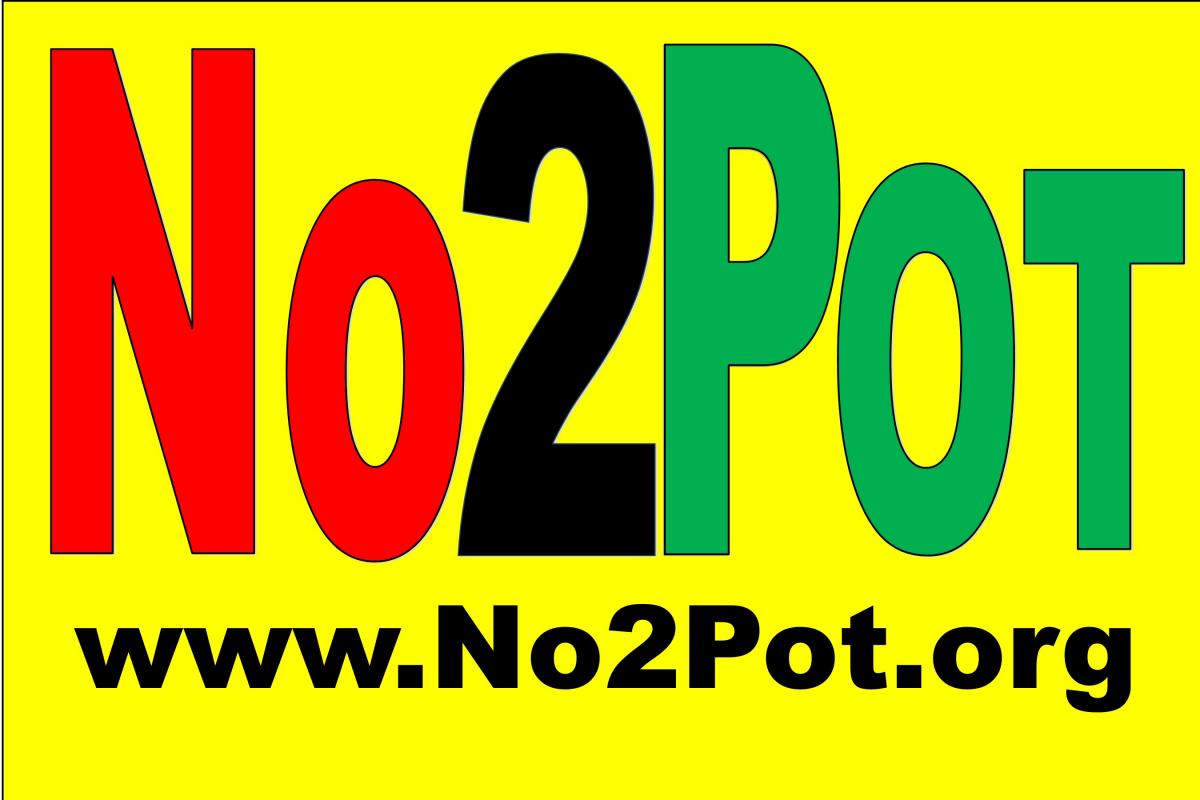|
Amendment votes and Legislative Bills ARE NOT a PRESCRIPTION. These forms of 'medicine' circumvents the safety & health procedures, standards and guidelines required by the FDA. There is no dosage, frequency, age-specific, ... guidelines for 'medical' marijuana.
Medical marijuana should refer to FDA approved medicine however proponents of legalizing pot have coined the term to mean smoking pot or eating food with infused pot and calling it a medicine which has intentionally caused a great deal of confusion. I will refer to this as "medical" pot.
Marijuana and Drug Interactions
"Medical" pot does NOT answer questions that should be addressed when using medicines.
-
Determine a specific dosage (amount) and frequency (how often).
-
THC is the chemical compound that gives a person a high or impairs. Even natural plants range from 5-15% but growers can make the levels even higher.
-
CBD is the other major chemical component which is the real medicine of this drug. This can also varying levels which without proper testing it difficult to determine the exact amount necessary to treat each issue.
-
The approved medical marijuana has very little THC especially the medicines prescribed to children and adolescents due to their developing & highly vulnerable brain.
-
QUESTION: If homegrown pot were truly to be used as medicine shouldn't the THC levels be minimal? Shouldn't this be a requirement for growers? Shouldn't this be regulated??
-
Analyze the interaction with other medications or supplements. (See below for example) This should be of key concern to everyone taking any medicine, drinking alcohol, supplements...
-
Given that senior citizens are typically on a variety of medications taking another mind-altering drug might produce dementia symptoms, hallucinations, cause other medicines not to be as effective....
-
Smoked marijuana (homegrown pot) can be produced with many different levels of THC & CBD. Unless the grower is skilled and the person buying goes to the same grower each time levels will more than likely differ significantly. This is a major problem. Reactions can differ ever time the pot is smoked.
-
EXAMPLE- (This is not comparing marijuana to either of these drugs just an example of the effect of interaction) Alcohol and Narcotics both suppress the respiratory system (breathing) in two separate ways but when taken simultaneously the respiratory system significantly suppressed. The unknown effects of mixing marijuana with other medicines should be of major concern.
-
Analyze all the chemicals in medicine and take out the unknown. Homegrown pot has many other chemicals (400 or more) than just THC and CBD. These chemicals can vary in potency and type from crop to crop, from environment to environment ... than add the fact that pesticides are often used.
-
QUESTION- How do these "other" chemicals affect the body & mind? Isn't it safer and the drug effects more predictable when the FDA has taken all these unknown chemicals out of medicine?
-
Throughout history, humans have used plants to treat all kinds of illnesses. Today, about 40 percent of our prescription medicines come from plant extracts or synthesized plant compounds. Plant-based medicines are everywhere, including the shelves of our local drugstores. Some examples are inulin from the roots of dahlias, quinine from the cinchona, morphine and codeine from the poppy, aspirin from willow bark and digoxin from the foxglove. For instance to reduce the chance of heart attacks doctors don't just give out a piece of bark and have a person chew on it throughout the day. They recommend taking 1/2 an aspirin maybe twice a day.
-
|
|
10 Pharmaceutical Drugs Based on Cannabis
|
|
Several pharmaceutical drugs have been developed which either contain or have similar chemicals as those found in the cannabis plant. Some researchers have used their understanding of how the brain processes cannabinoids to develop drugs which follow the same pathways but work differently than marijuana.
A sample of those pharmaceutical drugs based on marijuana are listed below with their names, trade names, manufacturers, cannabis-related properties, suggested medical uses, and approval statuses. |
|
Drugs that contain chemicals taken directly from the marijuana plant |
|
1. Sativex
Manufacturer: GW Pharmaceuticals (GWPH on NASDAQ)
 |
|
Sativex oral spray
Source: "Medical Marijuana aka Sativex Now Available in UK," examiner.com, June 19, 2010 |
Cannabis-Related Properties
Mouth spray whose chemical compound is derived from natural extracts of the cannabis plant. Sativex contains two cannabinoids: THC (delta-9-tetrahydrocannabinol) and CBD (cannabidiol).
Suggested Medical Use
Treatment of neuropathic pain and spasticity in patients with Multiple Sclerosis (MS); Analgesic treatment in adult patients with advanced cancer who experience moderate to severe pain.
Approval Status
Approved and launched in the UK on June 21, 2010, making it the first cannabis-based prescription medicine in the world (rescheduled from UK Schedule 1 to Schedule 4 on Apr. 10, 2013). Licensed to Bayer in the UK and to Almirall in Europe. Approved to treat spasticity caused by multiple sclerosis in Spain (July 28, 2010), Canada (Aug. 31, 2010), Czech Republic (Apr. 15, 2011), Denmark (June 8, 2011), Germany (July 4, 2011), Sweden (Dec. 22, 2011), Austria (Feb. 7, 2012), Italy (May 7, 2013), and Switzerland (Nov. 27, 2013). Also approved in Finland, Israel, Norway, and Poland.
In the US, Phase III clinical trials started in late 2006 for treatment of pain in cancer patients (recruitment expected to be completed by the end of 2013). On Apr. 20, 2011, a US patent was granted for Sativex in cancer pain. As of Nov. 1, 2013, Sativex was still in Phase 3 clinical development to treat pain in cancer patients, and the company expects to see results from the program in 2014. GW Pharmaceuticals worked with US licensing partner Otsuka Pharmaceutical opened a Phase III Investigational New Drug application in the United States to treat spasticity due to Multiple Sclerosis on Aug. 14, 2013.
|
|
Drugs that contain synthetic versions of chemicals naturally found in marijuana |
2. Dronabinol / Marinol
Manufacturer: Unimed Pharmaceuticals, a subsidiary of Solvay Pharmaceuticals
 |
Marinol
Source: "Cannabis, Coca, & Poppy: Nature's Addictive Plants," deamuseum.org (accessed Nov. 12, 2013) |
Cannabis-Related Properties
Synthetic Delta-9 THC.
Suggested Medical Use
Treatment of nausea and vomiting for patients in cancer treatment; appetite stimulant for AIDS patients; analgesic to ease neuropathic pain in multiple sclerosis patients.
Approval Status
FDA approved in United States as Schedule I drug for appetite stimulation (1992) and for nausea (1985); moved to Schedule III effective July 2, 1999.
Approved in Denmark for multiple sclerosis (Sep. 2003).
Approved in Canada for AIDS-related anorexia (Apr. 2000) and for nausea and vomiting associated with cancer chemotherapy (1988).
|
|
Drugs that contain chemicals similar to those in marijuana but not found in the plant |
3. Nabilone / Cesamet
Manufacturer: Valeant Pharmaceuticals International (VRX on NASDAQ)
Cannabis-Related Properties
Synthetic cannabinoid similar to THC.
Suggested Medical Use
Treatment of nausea and vomiting in patients undergoing cancer treatment.
Approval Status
Originally approved by the FDA for use in the US in 1985, but removed from the market until re-approved by the FDA on May 15, 2006 and made available in US pharmacies on Aug. 17, 2006. Also approved in United Kingdom and Australia (1982), Canada (1981), and Mexico (2007).
On May 15, 2006, the FDA approved safety labeling revisions for nabilone (Cesamet 1-mg capsules) to advise of warnings and precautions related to its use, such as its potential to affect the mental state of a patient. On Feb. 22, 2007, Valeant announced the submission of an Investigational New Drug application to test Cesamet as a treatment for chemotherapy-induced neuropathic pain. |
4. Dexanabinol
Manufacturer: Solvay Pharmaceuticals (acquired by Abbott Laboratories in 2010; ABT on NASDAQ)
Cannabis-Related Properties
Synthetic non-psychotropic cannabinoid that blocks NMDA receptors and COX-2 cytokines and chemokines.
Suggested Medical Use
Neuroprotective (protects brain from damage) for use after cardiac surgery; regain memory and other high-level function following Traumatic Brain Injury (TBI); possible future use as an anti-cancer drug.
Approval Status
Not approved for use as of Nov. 11, 2013.
The Phase III clinical trial involving 846 patients was completed in Dec. 2004; Pharmos said the drug failed to show statistically significant improvement in the late-stage clinical trial; A Phase I study to test for the treatment of brain cancer began in Sep. 2012.
|
5. CT-3 (ajulemic acid)
Manufacturer: Indevus Pharmaceuticals (IDEV on NASDAQ)
Cannabis-Related Properties
Synthetic, more potent analog of THC metabolite THC-11-oic acid.
Suggested Medical Use
Treatment of spasticity and neuropathic pain in MS patients; anti-inflammatory properties may help relieve pain from arthritis.
Approval Status
Not approved for use as of Nov. 11, 2013.
Completed Phase I clinical trials as of July 2002.
A Phase II study began in May 2002 in Germany to test its analgesic properties in patients with neuropathic pain.
|
6. Cannabinor (formerly PRS-211,375)
Manufacturer: Pharmos (PARS on NASDAQ)
Cannabis-Related Properties
Synthetic chemical that specifically binds to the brain's secondary cannabinoid receptor (CB2).
Suggested Medical Use
Anti-inflammatory; treatment of chronic pain with an emphasis on neuropathic (nerve) pain; bladder control.
Approval Status
Not approved for use outside of laboratory research as of Nov. 11, 2013.
Phase II(a) trials began in the UK in the 2nd quarter of 2006. In Jan. 2007, Pharmos reported that in a Phase 2a experimentally induced pain model, cannabinor failed to meet the primary endpoint of reducing capsaicin-induced pain, but the drug was found to be safe. |
7. HU 308
Manufacturer: Pharmos (licensed from the Hebrew University of Jerusalem)
Cannabis-Related Properties
Synthetic chemical that specifically binds to the brain's secondary cannabinoid receptor (CB2).
Suggested Medical Use
Treatment of hypertension; anti-inflammatory.
Approval Status
Not approved for use outside of laboratory research as of Nov. 11, 2013.
Demonstrated efficacy in pre-clinical laboratory studies. |
8. HU 331
Manufacturer: Cayman Chemical
Cannabis-Related Properties
Synthetic chemical compound composed of central cannabinoid (CB1), peripheral cannabinoid (CB2), and non-CB receptor-mediated pharmacology.
Suggested Medical Use
Treatment of memory, weight loss, appetite, neurodegeneration, tumor surveillance, analgesia, and inflammation.
Approval Status
Not approved for use outside of laboratory research as of Nov. 11, 2013.
Demonstrated efficacy in pre-clinical laboratory studies, and has finished pre-clinical toxicology studies.
ProCon.org contacted Cayman Chemical by phone on Feb. 15, 2008; According to Cayman Chemical, no current studies were taking place although HU 331 was available for purchase by research institutions.
Demonstrated efficacy in pre-clinical laboratory studies.
|
|
Drugs that do not work like marijuana but use the same brain pathways |
9. Rimonabant / Acomplia
Manufacturer: Sanofi-Aventis (SNY on NASDAQ)
 |
Acomplia (rimonabant)
Source: "Generic Drugs Online," generic-line.com (accessed Nov. 12, 2013) |
Cannabis-Related Properties
Synthetic chemical that blocks endocannabinoids from being received in the brain, and, as a result, suppresses appetite.
Suggested Medical Use
Anti-obesity (appetite reducer).
Approval Status
Not approved for use as of Nov. 11, 2013.
In Feb. 2006, the FDA issued an "approvable letter" for Acomplia as a weight loss drug, but also sent a "non-approvable letter" for the drug as a smoking cessation aid. The approvable letter meant that there was a potential for eventual approval, but issues had to be addressed that were not made public. On June 13, 2007, an FDA advisory panel of outside experts unanimously recommended that the regulatory agency not approve the drug for sale in the United States after it was linked with suicidal thoughts. Sanofi-Aventis withdrew its FDA application following the rejection.
The drug was approved in June 2006 for use in Europe and marketed in the European Union; approval withdrawn by European Medicines Agency on Jan. 16, 2006 due to potential psychiatric side effects. Sanofi-Aventis then removed from it the market.
|
|
10. Taranabant / MK-0364
Manufacturer: Merck (MRK on NASDAQ)
Cannabis-Related Properties
Targets receptors in the brain linked to appetite; acts as a Cannabinoid receptor type 1 (CB1R) inverse agonist, blocking cannabinoid receptors in the brain, which suppresses appetite.
Suggested Medical Use
Anti-obesity.
Approval Status
Not approved for use as of Nov. 11, 2013.
Merck started Phase III trials in Jan. 2008 and was expected to submit the drug for FDA approval in 2008. In Oct. 2008, Merck announced that the side effects from taranabant, including depression and anxiety, increased at higher doses, and therefore the company decided to stop development.
Above information 10 Pharmacutical Drugs From Pro/Con.org
|
|







